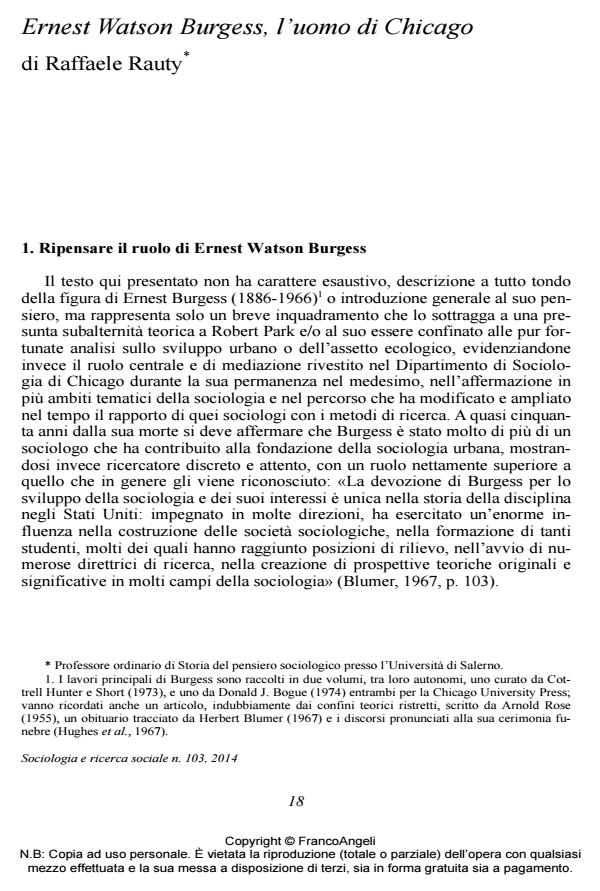Ernest Watson Burgess, the Man of Chicago
Journal title SOCIOLOGIA E RICERCA SOCIALE
Author/s Raffaele Rauty
Publishing Year 2014 Issue 2014/103
Language Italian Pages 22 P. 18-39 File size 105 KB
DOI 10.3280/SR2014-103002
DOI is like a bar code for intellectual property: to have more infomation
click here
Below, you can see the article first page
If you want to buy this article in PDF format, you can do it, following the instructions to buy download credits

FrancoAngeli is member of Publishers International Linking Association, Inc (PILA), a not-for-profit association which run the CrossRef service enabling links to and from online scholarly content.
Ernest Watson Burgess is mostly known as the man of «urban growth» or as the co-author, with Robert Park, of The Introduction to the Science of Sociology. However, his theoretical approach was also connected to issues of parole violation, juvenile delinquency and, significantly, to the debate on methods of research. Burgess, who directed several surveys and had a strong proclivity for case studies and firsthand data, combined his inclination with a strong flexibility in the use of research methods, which emphasized the value of the statistical approach in a positive relationship with William Ogburn, main member of the department of quantitative methods.
Raffaele Rauty, Ernest Watson Burgess, l’uomo di Chicago in "SOCIOLOGIA E RICERCA SOCIALE " 103/2014, pp 18-39, DOI: 10.3280/SR2014-103002